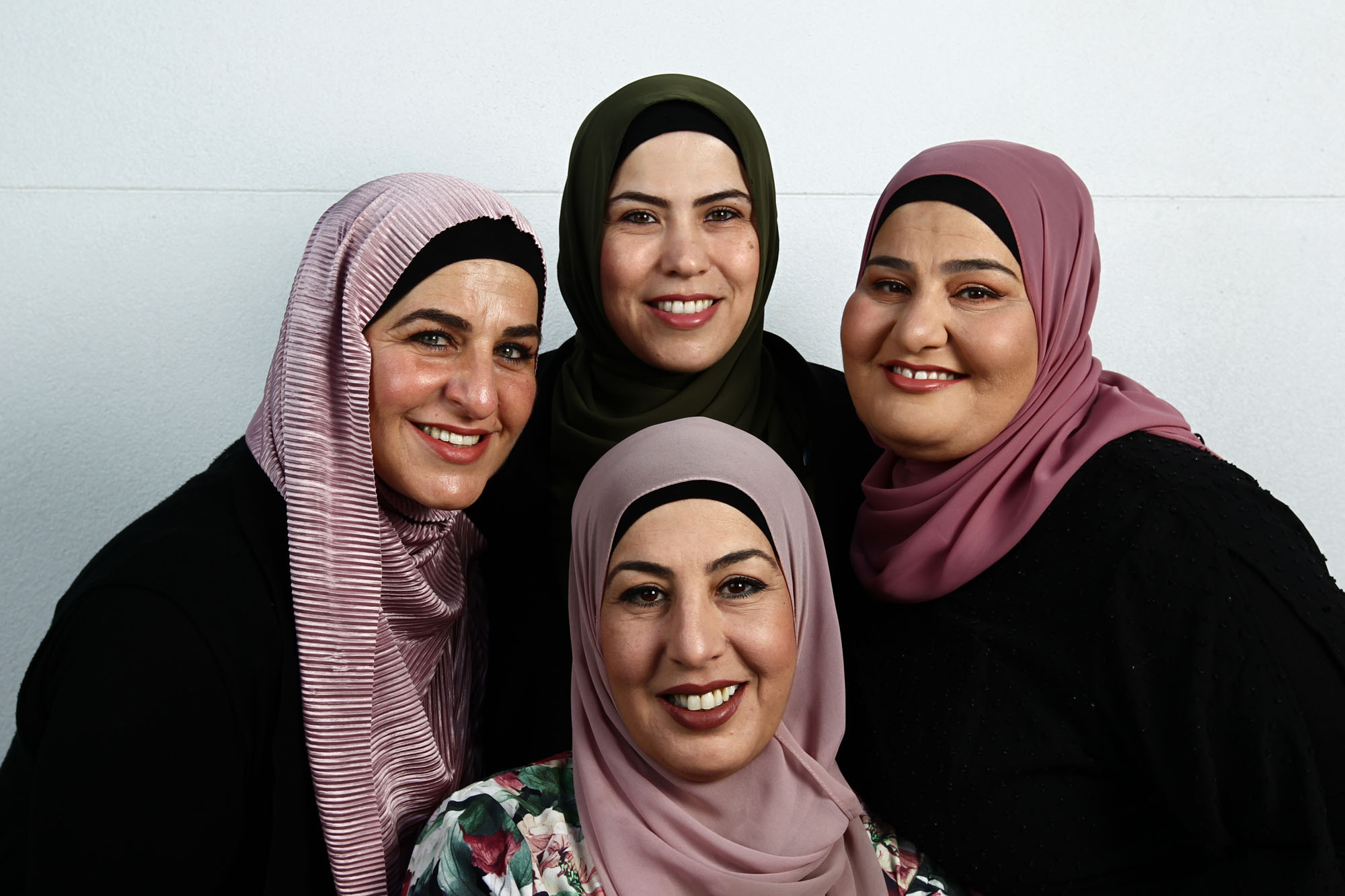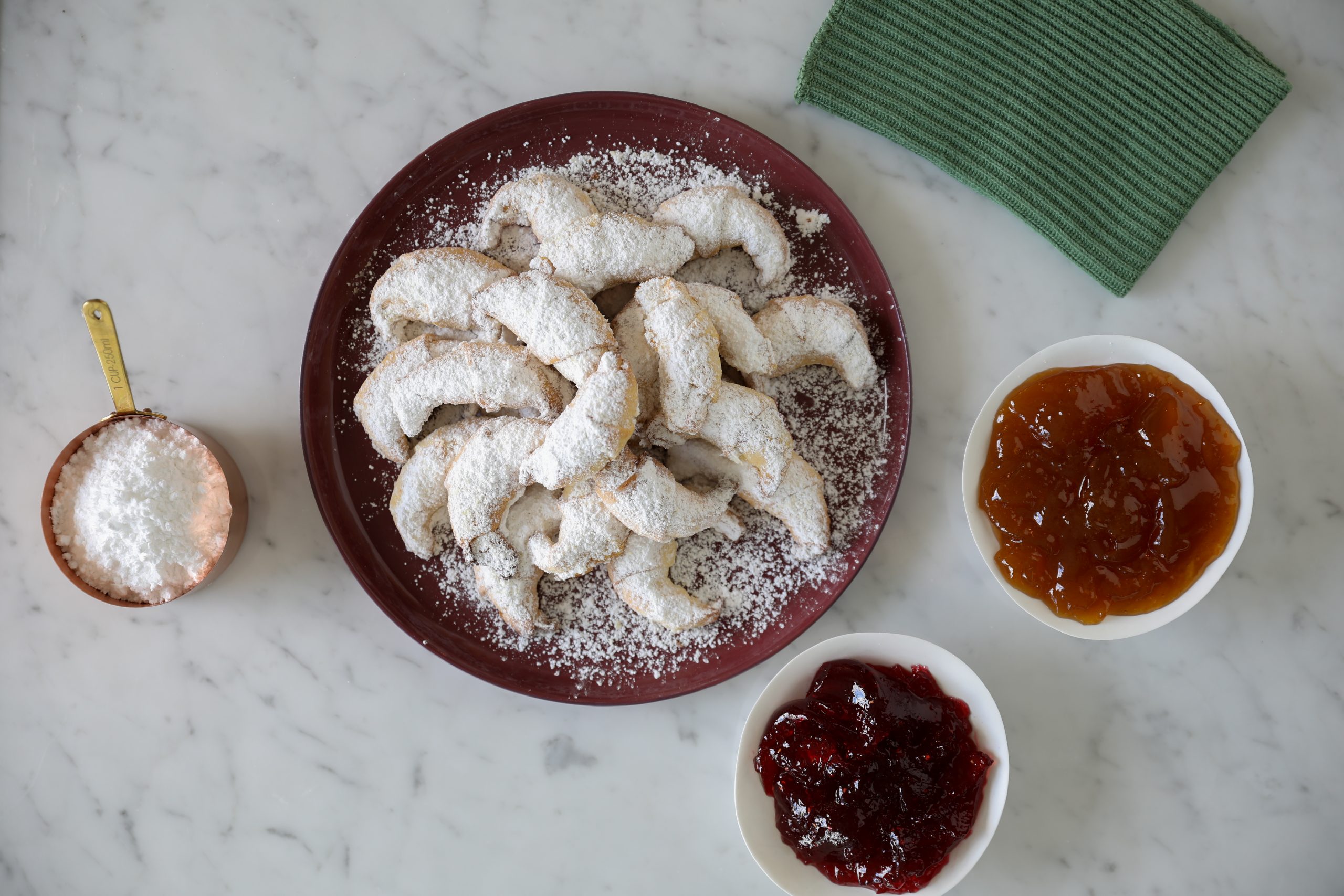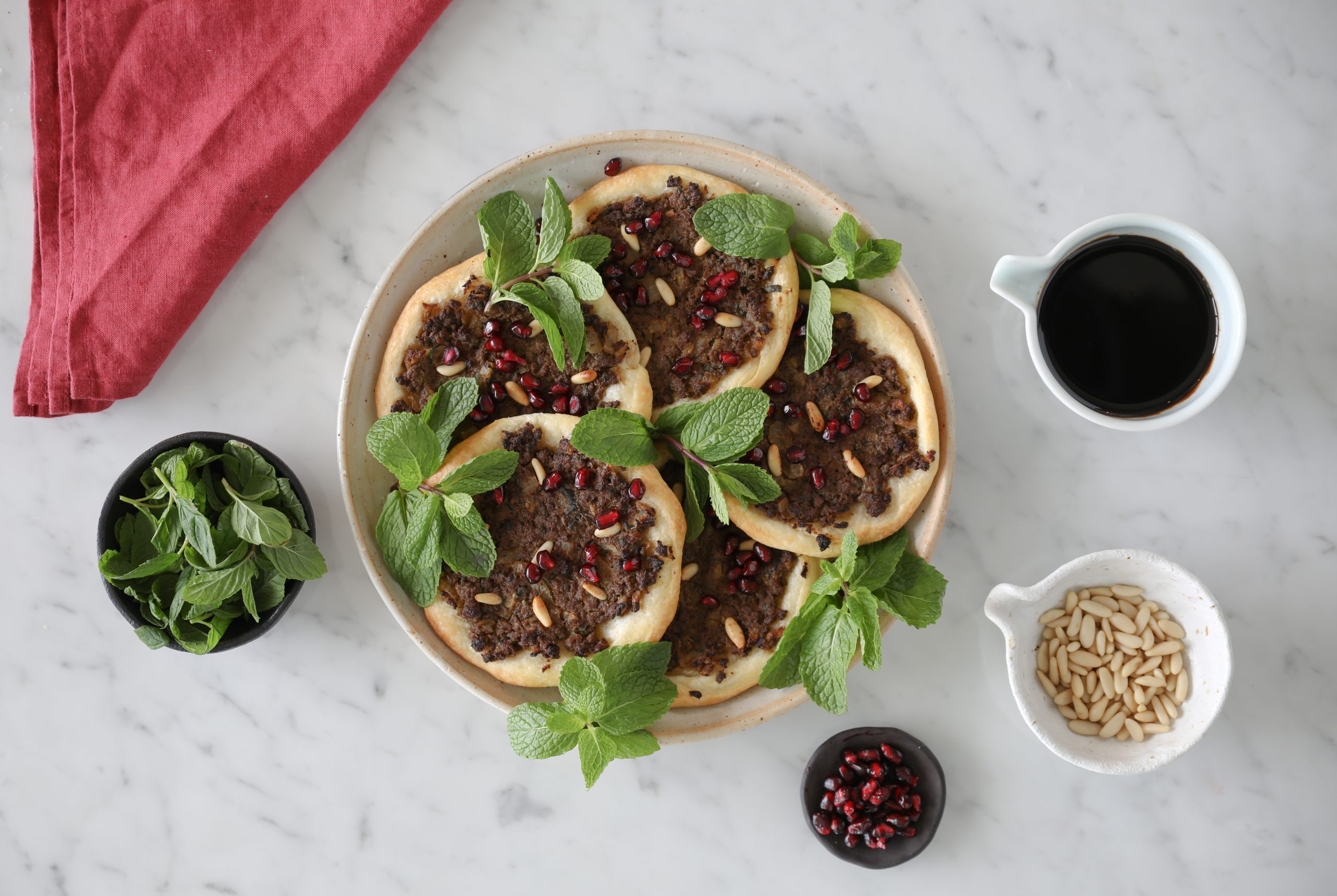Shahrouk Sisters’ Lebanese Fattah
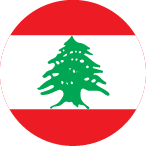 Lebanon
Lebanon 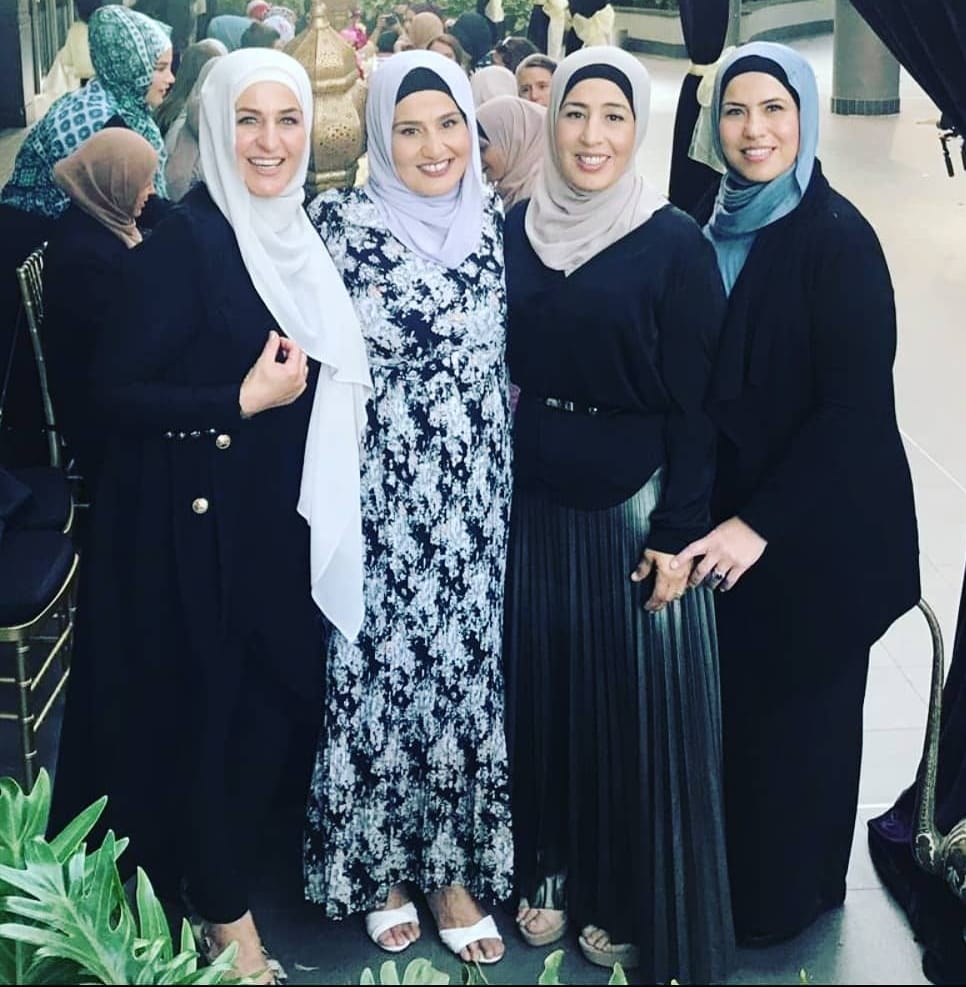
When we were younger we all thought Fattah was the word for Ramadan. At the time, we didn’t understand exactly why we couldn’t eat or drink but we absolutely knew that if there was Fattah on that table, it was Ramadan. One of our younger sisters actually used to call the dish Ramadan – but we won’t name and shame!
Our family is large. There’s 13 of us in total: one boy (the eldest), 10 girls, and our amazing parents. Fattah was always teamwork. When we were growing up, it used to involve lots of our sisters in the production. Some of us would be assigned to doing the dishes and setting the table, the rest of us were responsible for making the Fattah. Our older brother helped set the table but then he’d be first to sit down at the table whilst we were putting together the finishing touches. We all thought he was spoilt but making this dish is such fun, we can’t really say we drew the short straw.
There were so many elements and layers and everyone had their special area of responsibility and played a role in putting this yummy dish together. One for the seasoning of the yoghurt. One for the perfect boiling of the chickpeas. One for the slow buttery oven-baking of the bread and our favourite role – the one we all used to fight over – was the toasting of the nuts in butter, lots of butter (fat is flavour), getting them ready to pour over one minute before the Adan – the call to our magrib prayer at sunset and time for us to break our fast.
We serve the Fattah while the butter is still sizzling and as a starter after we’ve broken our fast and lined our stomachs with water and dates.
There are so many variations of Fattah across our families and the entire Middle East. Some cooks use eggplant. Some do it with chicken. Others prefer it with spiced lamb mince. And there are the adventurous cooks that do it with slow cooked lamb tongues.
The Shahrouk Sisters’ family favourite is with chickpeas, served with fresh mint and red raddish. The idea is to serve cold garlicky minted yoghurt on top of warm crunchy toasted bread and hot boiled chickpeas. It’s like a family signature dish – and something we made on Family Food Fight. It’s our mother’s recipe tweaked with toasted garlic for added texture and flavour.
Our parents were both born in a village in the north of Lebanon and our mother Shamma came out to Australia at 16, escaping the civil war to marry our dad. In so many ways, she was really thrown in the deep-end, not just so far away from her own parents at what now seems such a young age but she also had to teach herself to cook. At 16, she knew nothing about cooking and relied on her new mother-in-law (our grandmother Tayta) and neighbours. What made it a bit easier was that there were lots of people who all came from the village my parents came from and knew each other and they sort of created a new village to support each other.
Our mother also learnt a lot from our father, Hassan, who loves cooking and also played a role in teaching us how to cook. He makes a killer baba ganoush and he taught us a lot about meat and how to choose and cook greens. Being in the kitchen together was always noisy, boisterous and fun and we are so grateful that they passed their love of food and the intricacies and expertise of traditional Lebanese cooking on to us. It really is a shared family passion that says a lot about who we are and how much we enjoy being together.
Although, Fattah is primarily made in the month of Ramadan, we also present it for special Sunday breakfasts throughout the year. The only thing that has really changed is that we are now all grown women and married with our own households and families so we are each one-woman teams unless we assign roles to our own children!
Share this story
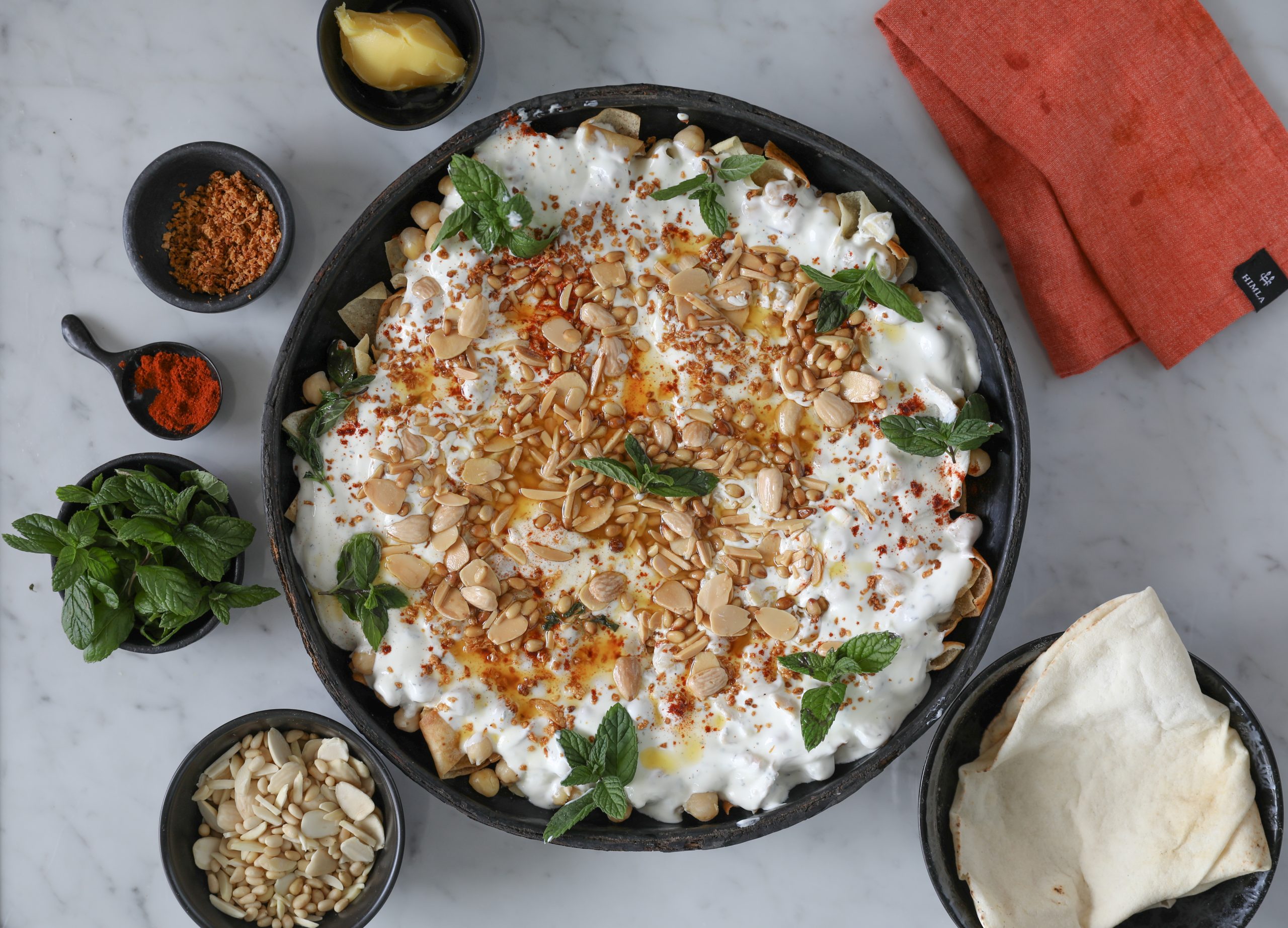
To prepare the chickpeas: soak dried chickpeas over night. The next day, bring chickpeas to the boil and simmer for approximately 40 minutes until they are slightly soft but firm but still nice and firm. (Not squishy like you would do for hummus.)
Meanwhile cut the bread into 2 cm squares. Mix the butter and oil, toss the bread in the oils to lightly coat then place on an oven tray and bake at 180C degrees and toast slowly. Keep tossing the bread every 2-3 minutes to cook evenly. With the bread, “the slower cooked the better and crunchier”. It usually takes about 20-25 minutes, stirring frequently.
In a mixing bowl, add yoghurt, garlic, dried mint and salt and mix well.
To bring it all together, lay the toasted bread at the bottom of a tray, drain the chickpeas and layer on top of the bread. Top with the yoghurt mix.
In a saucepan, melt a generous amount of butter, add nuts and toast to a golden colour. Drizzle the sizzling nuts and butter on top of the bread and chickpeas. Add a spinkle of paprika.
Serve immediately – with radishes and fresh mint on the side for added crunch, freshness and zing to your palette. Garlic croutons are an optional extra for further crunch.
